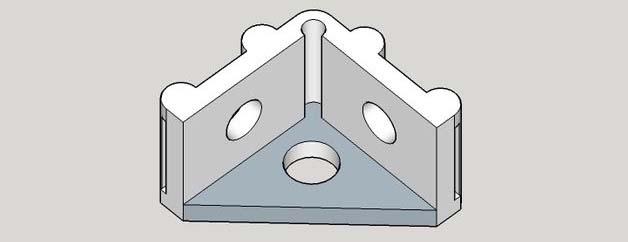The working conditions of plastic molds are different from those of cold stamping dies. Generally, they must work at 150°C-200°C. In addition to being subjected to certain pressure, they also have to withstand temperature. According to the different use conditions and processing methods of plastic molding molds, the basic performance requirements of plastic mold steel are roughly summarized as follows: 
1. Sufficient surface hardness and wear resistance The hardness of the plastic mold is usually below 50-60HRC, and the heat-treated mold should have sufficient surface hardness to ensure that the mold has sufficient rigidity. When the mold is working, due to the filling and flow of the plastic, it has to withstand greater compressive stress and friction. The mold is required to maintain the accuracy of the shape and the stability of the dimensional accuracy to ensure that the mold has sufficient service life. The wear resistance of the mold depends on the chemical composition and heat treatment hardness of the steel, so increasing the hardness of the mold is beneficial to improve its wear resistance. 2. Excellent machinability In addition to EMD processing, most plastic molding molds require certain cutting processing and fitter repairs. In order to extend the service life of cutting tools, improve cutting performance, and reduce surface roughness, the hardness of the steel used for plastic molds must be appropriate. 3. Good polishing performance High-quality plastic products require small roughness on the surface of the cavity. For example, the surface roughness value of the injection mold cavity is required to be less than Ra0.1-0.25, and the optical surface requires Ra<0.01nm. The cavity must be polished to reduce the surface roughness value. For this reason, the selected steel requires less material impurities, fine and uniform structure, no fiber directionality, and no pitting or orange peel defects during polishing. 4. Good thermal stability The shape of the parts of plastic injection molds is often complicated and difficult to process after quenching. Therefore, the Dongguan plastic mold manufacturer reminds everyone that they should try to choose those with good thermal stability. When the mold is formed by heat treatment, the linear expansion coefficient is small and the heat treatment is deformed. Small, small dimensional change rate caused by temperature difference, stable metallographic structure and mold size, can be reduced or no longer processed, to ensure the mold dimensional accuracy and surface roughness requirements. With the development of the plastics industry, the complexity and precision of plastic products are becoming more and more demanding, and higher requirements are placed on mold materials. For the manufacture of complex, precise and corrosion-resistant plastic molds, pre-hardened steel (such as PMS), corrosion-resistant steel (such as PCR) and low-carbon maraging steel (such as 18Ni-250) can be used, all of which have good Cutting processing, heat treatment and polishing performance and high strength. In addition, the Dongguan plastic mold manufacturer reminds everyone that when selecting materials, you must also consider preventing scratches and bonding. If there is relative movement between the two surfaces, try to avoid choosing materials with the same structure. Under special conditions, one side can be plated. Or nitriding, so that the two sides have different surface structures.
